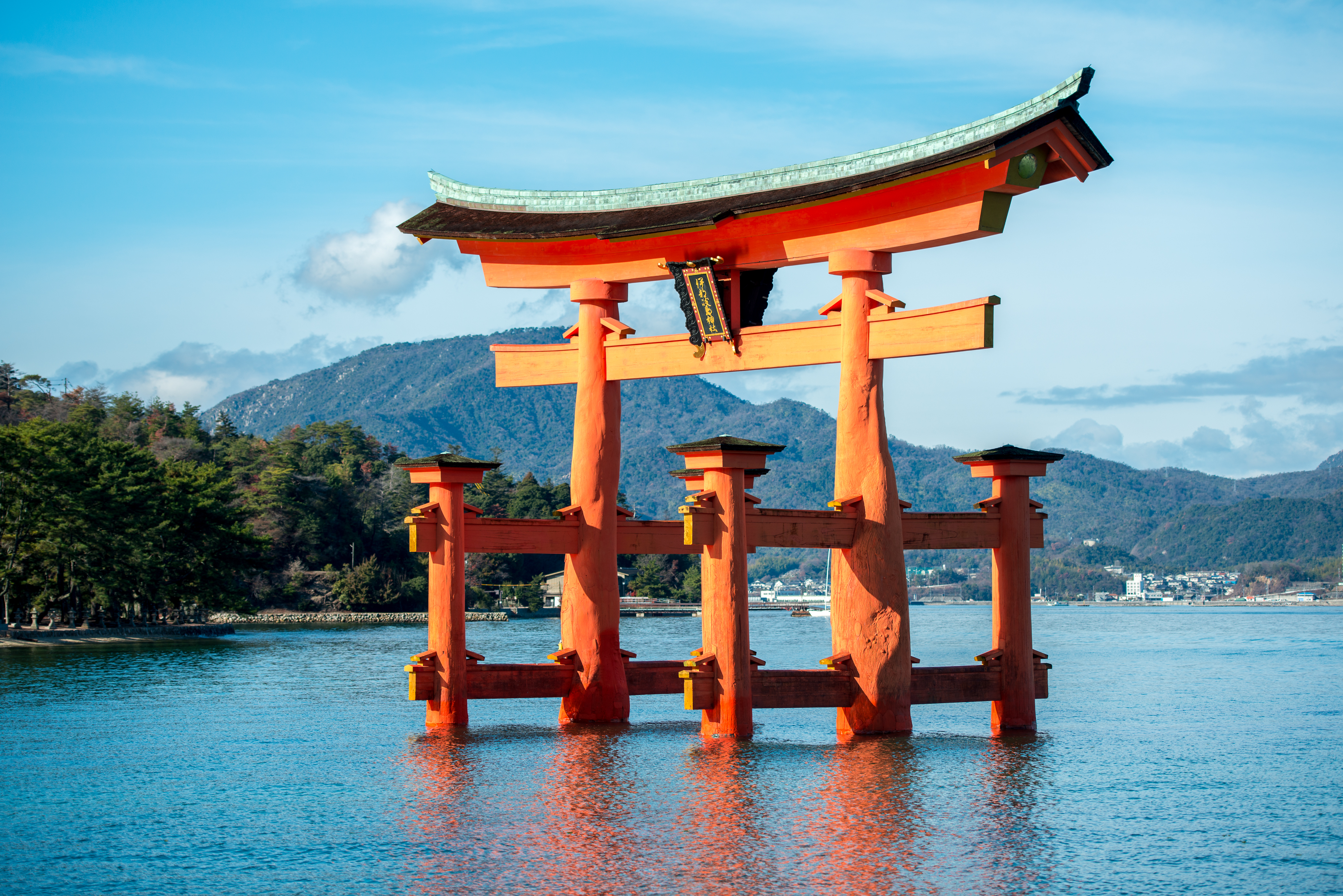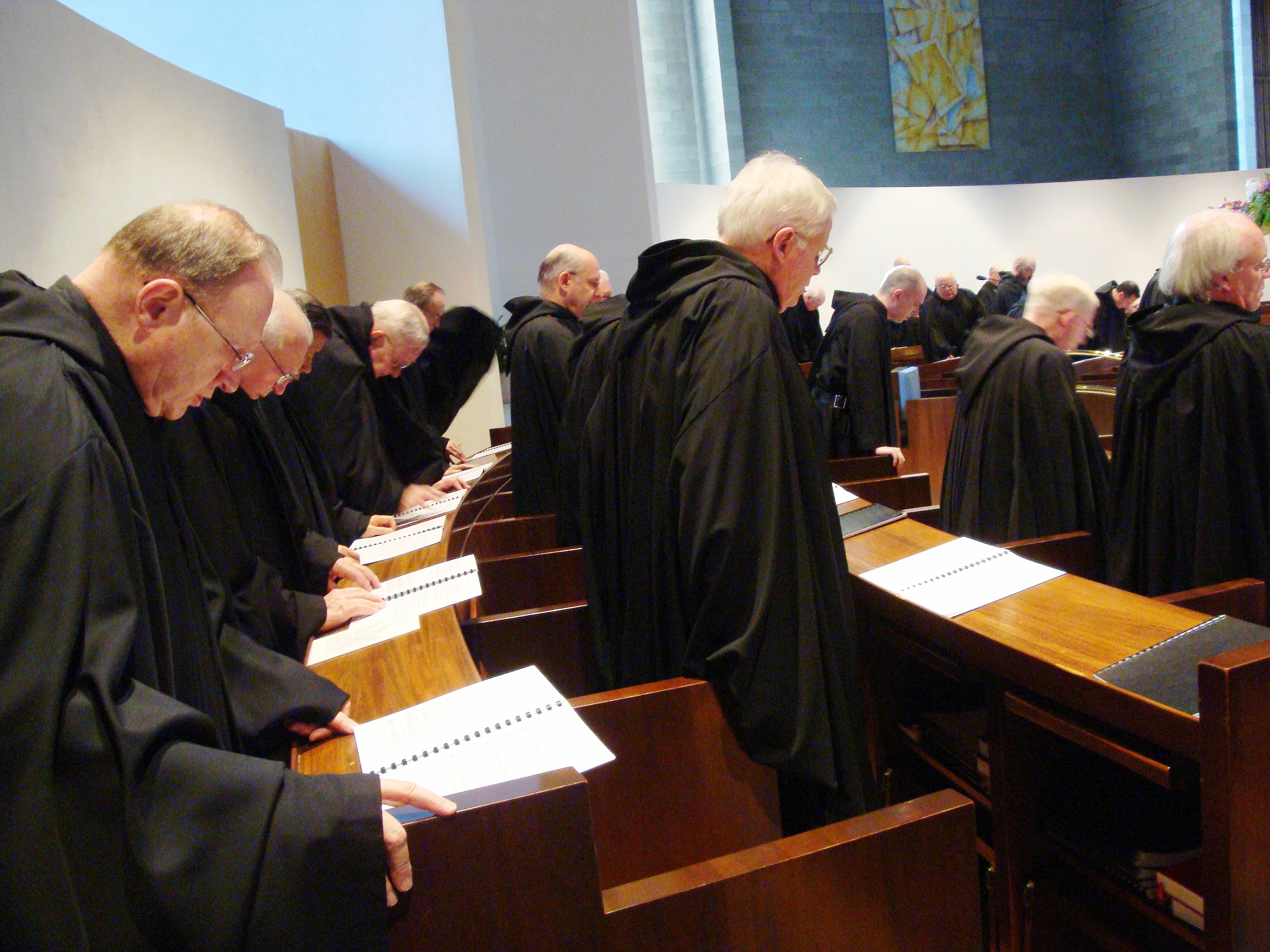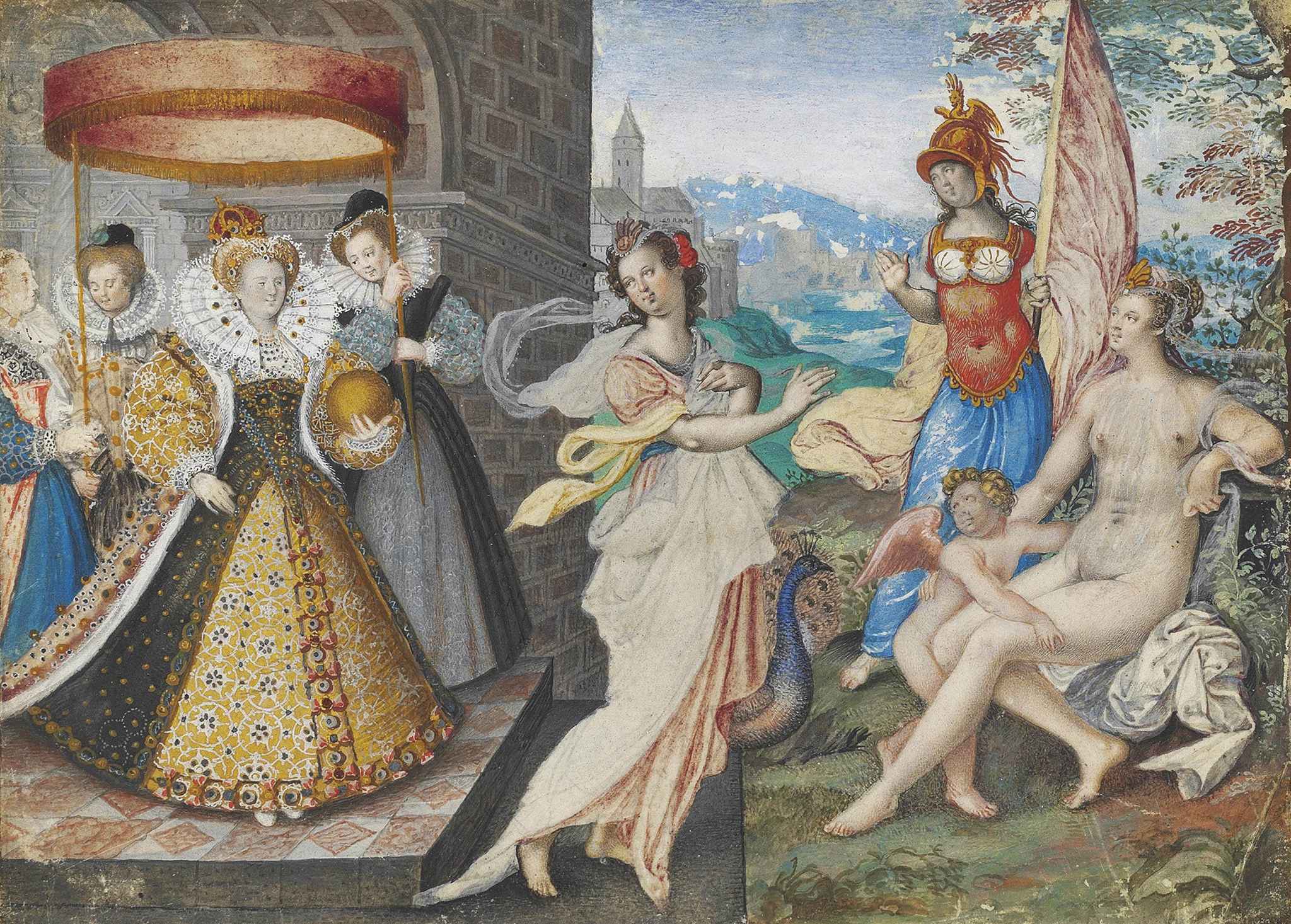|
Norito
are liturgical texts or ritual incantations in Shinto, usually addressed to a given ''kami''. History The first written documentation of ''norito'' dates to 712 CE in the ''Kojiki'' and 720 CE in the '' Nihongi''. The Engishiki, a compilation of laws and minute regulation presented by the court compiled in 927 CE, preserves twenty-seven representative forms of ''norito''. Etymology There is no single universally accepted theory to explain the meaning of the term.Philippi (1990). p. 2. One theory derives ''norito'' from ''noru'' ( 宣る, 'to declare'; cf. the verbs '' inoru'' 'to pray' and '' norou'' 'to curse') - combined with the suffix ''-to''. A variant term, ''notto'', is derived from a combination of ''norito'' with ''koto'', 'word'. There are various known ways of writing the word in kanji: aside from 祝詞 (currently the standard), 詔戸言, 詔刀言, and 諄辞 are also attested. One recent writer summed up the original meaning of ''norito'' as "a general term ... [...More Info...] [...Related Items...] OR: [Wikipedia] [Google] [Baidu] |
Shinto
Shinto () is a religion from Japan. Classified as an East Asian religion by scholars of religion, its practitioners often regard it as Japan's indigenous religion and as a nature religion. Scholars sometimes call its practitioners ''Shintoists'', although adherents rarely use that term themselves. There is no central authority in control of Shinto, with much diversity of belief and practice evident among practitioners. A polytheistic and animistic religion, Shinto revolves around supernatural entities called the . The are believed to inhabit all things, including forces of nature and prominent landscape locations. The are worshiped at household shrines, family shrines, and ''jinja'' public shrines. The latter are staffed by priests, known as , who oversee offerings of food and drink to the specific enshrined at that location. This is done to cultivate harmony between humans and and to solicit the latter's blessing. Other common rituals include the dances, rites of pa ... [...More Info...] [...Related Items...] OR: [Wikipedia] [Google] [Baidu] |
Shinto Terminology
Shinto () is a religion from Japan. Classified as an East Asian religion by scholars of religion, its practitioners often regard it as Japan's indigenous religion and as a nature religion. Scholars sometimes call its practitioners ''Shintoists'', although adherents rarely use that term themselves. There is no central authority in control of Shinto, with much diversity of belief and practice evident among practitioners. A polytheistic and animistic religion, Shinto revolves around supernatural entities called the . The are believed to inhabit all things, including forces of nature and prominent landscape locations. The are worshiped at household shrines, family shrines, and ''jinja'' public shrines. The latter are staffed by priests, known as , who oversee offerings of food and drink to the specific enshrined at that location. This is done to cultivate harmony between humans and and to solicit the latter's blessing. Other common rituals include the dances, rites of pass ... [...More Info...] [...Related Items...] OR: [Wikipedia] [Google] [Baidu] |
Kami
are the deities, divinities, spirits, phenomena or "holy powers", that are venerated in the Shinto religion. They can be elements of the landscape, forces of nature, or beings and the qualities that these beings express; they can also be the spirits of venerated dead people. Many ''kami'' are considered the ancient ancestors of entire clans (some ancestors became ''kami'' upon their death if they were able to embody the values and virtues of ''kami'' in life). Traditionally, great leaders like the Emperor could be or became ''kami''. In Shinto, ''kami'' are not separate from nature, but are of nature, possessing positive and negative, and good and evil characteristics. They are manifestations of , the interconnecting energy of the universe, and are considered exemplary of what humanity should strive towards. ''Kami'' are believed to be "hidden" from this world, and inhabit a complementary existence that mirrors our own: . To be in harmony with the awe-inspiring aspects of na ... [...More Info...] [...Related Items...] OR: [Wikipedia] [Google] [Baidu] |
Liturgy
Liturgy is the customary public ritual of worship performed by a religious group. ''Liturgy'' can also be used to refer specifically to public worship by Christians. As a religious phenomenon, liturgy represents a communal response to and participation in the sacred through activities reflecting praise, thanksgiving, remembrance, supplication, or repentance. It forms a basis for establishing a relationship with God. Technically speaking, liturgy forms a subset of ritual. The word ''liturgy'', sometimes equated in English as "service", refers to a formal ritual enacted by those who understand themselves to be participating in an action with the divine. Etymology The word ''liturgy'' (), derived from the technical term in ancient Greek ( el, λειτουργία), ''leitourgia'', which literally means "work for the people" is a literal translation of the two words "litos ergos" or "public service". In origin, it signified the often expensive offerings wealthy Greeks made in ser ... [...More Info...] [...Related Items...] OR: [Wikipedia] [Google] [Baidu] |
Nara Period
The of the history of Japan covers the years from CE 710 to 794. Empress Genmei established the capital of Heijō-kyō (present-day Nara, Nara, Nara). Except for a five-year period (740–745), when the capital was briefly moved again, it remained the capital of Japanese civilization until Emperor Kanmu established a new capital, Nagaoka-kyō, in 784, before moving to Heian-kyō, modern Kyoto, a decade later in 794. Japanese society during this period was predominantly agricultural and centered on village life. Most of the villagers followed Shinto, Shintō, a religion based on the worship of natural and ancestral spirits named ''kami.'' The capital at Nara was modeled after Chang'an, the capital city of the Tang dynasty. In many other ways, the Japanese upper classes patterned themselves after the Chinese, including adopting the Chinese writing system, Chinese fashion, and a Chinese version of Buddhism. Literature Concentrated efforts by the Emperors of Japan, imperial court ... [...More Info...] [...Related Items...] OR: [Wikipedia] [Google] [Baidu] |
Shoku Nihongi
The is an imperially-commissioned Japanese history text. Completed in 797, it is the second of the '' Six National Histories'', coming directly after the '' Nihon Shoki'' and followed by '' Nihon Kōki''. Fujiwara no Tsugutada and Sugano no Mamichi served as the primary editors. It is one of the most important primary historical sources for information about Japan's Nara period. The work covers the 95-year period from the beginning of Emperor Monmu's reign in 697 until the 10th year of Emperor Kanmu's reign in 791, spanning nine imperial reigns. It was completed in 797 AD. The text is forty volumes in length. It is primarily written in kanbun, a Japanese form of Classical Chinese Classical Chinese, also known as Literary Chinese (古文 ''gǔwén'' "ancient text", or 文言 ''wényán'' "text speak", meaning "literary language/speech"; modern vernacular: 文言文 ''wényánwén'' "text speak text", meaning "literar ..., as was normal for formal Japanese texts at th ... [...More Info...] [...Related Items...] OR: [Wikipedia] [Google] [Baidu] |
Japanese Particles
Japanese particles, or , are suffixes or short words in Japanese grammar that immediately follow the modified noun, verb, adjective, or sentence. Their grammatical range can indicate various meanings and functions, such as speaker affect and assertiveness. Orthography and diction Japanese particles are written in hiragana in modern Japanese, though some of them also have kanji forms ( or for ''te'' ; for ''ni'' ; or for ''o'' ; and for ''wa'' ). Particles follow the same rules of phonetic transcription as all Japanese words, with the exception of (written ''ha'', pronounced ''wa'' as a particle), (written ''he'', pronounced ''e'') and (written using a hiragana character with no other use in modern Japanese, originally assigned as ''wo'', now usually pronounced ''o'', though some speakers render it as ''wo''). These exceptions are a relic of historical kana usage. Types of particles There are eight types of particles, depending on what function they serve. : ... [...More Info...] [...Related Items...] OR: [Wikipedia] [Google] [Baidu] |
Man'yōgana
is an ancient writing system that uses Chinese characters to represent the Japanese language. It was the first known kana system to be developed as a means to represent the Japanese language phonetically. The date of the earliest usage of this type of kana is not clear, but it was in use since at least the mid-7th century. The name "man'yōgana" derives from the ''Man'yōshū'', a Japanese poetry anthology from the Nara period written with ''man'yōgana.'' Texts using the system also often use Chinese characters for their meaning, but ''man'yōgana'' refers to such characters only when used to represent a phonetic value. The values were derived from the contemporary Chinese pronunciation, but native Japanese readings of the character were also sometimes used. For example, (whose character means 'tree') could represent either (based on Middle Chinese ) or or (meaning 'tree' in Old Japanese). Simplified versions of ''man'yōgana'' eventually gave rise to both the hiragana ... [...More Info...] [...Related Items...] OR: [Wikipedia] [Google] [Baidu] |
Divinity
Divinity or the divine are things that are either related to, devoted to, or proceeding from a deity.divine – Dictionary.com. What is or is not divine may be loosely defined, as it is used by different belief systems. Etymology The root of the word ''divine'' is literally "godly", but the use varies significantly depending on which deity is being discussed.Usages Divinity as a quality has two distinct usages: *Divine force or power - Powers or forces that are universal, or transcend human capacities *Divinity applied to mortals - Qualities of individuals who are considered to have some special access or relationship to the divine. Overlap occurs between these usages because[...More Info...] [...Related Items...] OR: [Wikipedia] [Google] [Baidu] |
Kotodama
refers to the Japanese belief that mystical powers dwell in words and names. English translations include "soul of language", "spirit of language", "power of language", "power word", "magic word", and "sacred sound". The notion of ''kotodama'' presupposes that sounds can magically affect objects, and that ritual word usages can influence our environment, body, mind, and soul. Basis This Japanese compound ''kotodama'' combines ''koto'' 言 "word; speech" and ''tama'' 霊 "spirit; soul" (or 魂 "soul; spirit; ghost") voiced as ''dama'' in ''rendaku''. In contrast, the unvoiced ''kototama'' pronunciation especially refers to , which was popularized by Onisaburo Deguchi in the Oomoto religion. This field takes the Japanese ''gojūon'' phonology as the mystical basis of words and meanings, in rough analogy to Hebrew Kabbalah. Etymology The etymology of ''kotodama'' is uncertain, but one explanation correlating words and events links two Japanese words pronounced ''koto'': this ... [...More Info...] [...Related Items...] OR: [Wikipedia] [Google] [Baidu] |
Poetry
Poetry (derived from the Greek '' poiesis'', "making"), also called verse, is a form of literature that uses aesthetic and often rhythmic qualities of language − such as phonaesthetics, sound symbolism, and metre − to evoke meanings in addition to, or in place of, a prosaic ostensible meaning. A poem is a literary composition, written by a poet, using this principle. Poetry has a long and varied history, evolving differentially across the globe. It dates back at least to prehistoric times with hunting poetry in Africa and to panegyric and elegiac court poetry of the empires of the Nile, Niger, and Volta River valleys. Some of the earliest written poetry in Africa occurs among the Pyramid Texts written during the 25th century BCE. The earliest surviving Western Asian epic poetry, the '' Epic of Gilgamesh'', was written in Sumerian. Early poems in the Eurasian continent evolved from folk songs such as the Chinese ''Shijing'', as well as religious hymns (the Sanskr ... [...More Info...] [...Related Items...] OR: [Wikipedia] [Google] [Baidu] |
Kanji
are the logographic Chinese characters taken from the Chinese script and used in the writing of Japanese. They were made a major part of the Japanese writing system during the time of Old Japanese and are still used, along with the subsequently-derived syllabic scripts of '' hiragana'' and '' katakana''. The characters have Japanese pronunciations; most have two, with one based on the Chinese sound. A few characters were invented in Japan by constructing character components derived from other Chinese characters. After World War II, Japan made its own efforts to simplify the characters, now known as shinjitai, by a process similar to China's simplification efforts, with the intention to increase literacy among the common folk. Since the 1920s, the Japanese government has published character lists periodically to help direct the education of its citizenry through the myriad Chinese characters that exist. There are nearly 3,000 kanji used in Japanese names and in comm ... [...More Info...] [...Related Items...] OR: [Wikipedia] [Google] [Baidu] |





.jpg)
